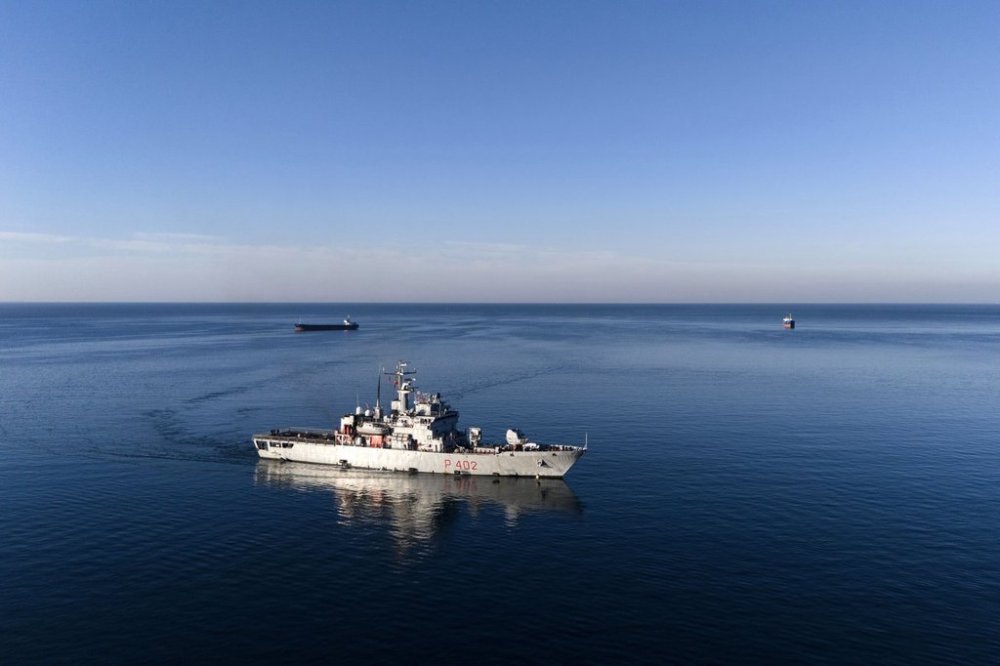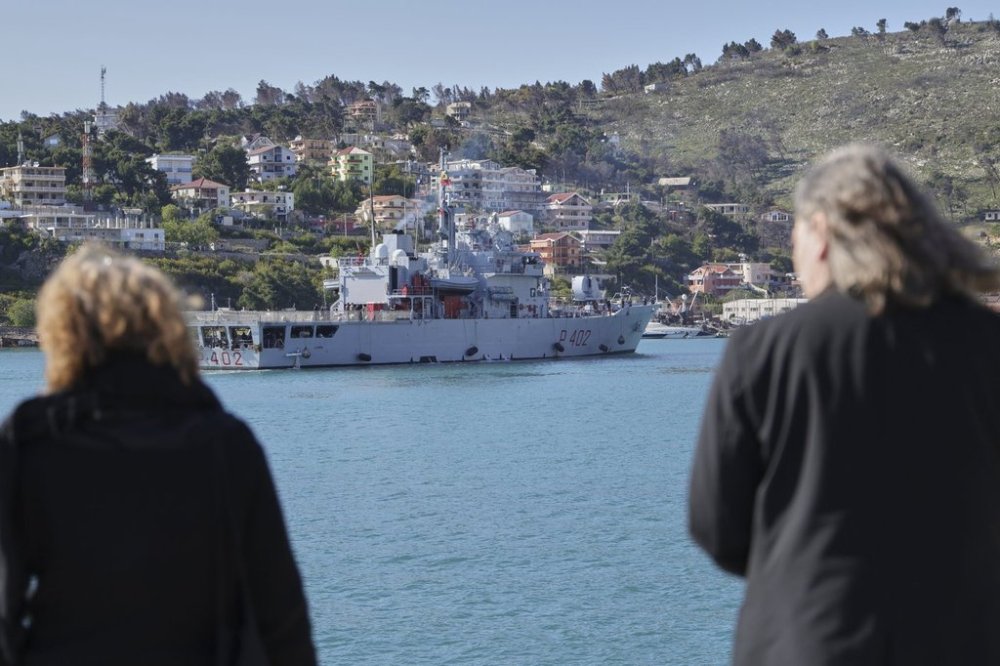Italy sends rejected migrants to detention centers in Albania
Advertisement
Read this article for free:
or
Already have an account? Log in here »
To continue reading, please subscribe:
Monthly Digital Subscription
$1 per week for 24 weeks*
- Enjoy unlimited reading on winnipegfreepress.com
- Read the E-Edition, our digital replica newspaper
- Access News Break, our award-winning app
- Play interactive puzzles
*Billed as $4.00 plus GST every four weeks. After 24 weeks, price increases to the regular rate of $19.00 plus GST every four weeks. Offer available to new and qualified returning subscribers only. Cancel any time.
Monthly Digital Subscription
$4.75/week*
- Enjoy unlimited reading on winnipegfreepress.com
- Read the E-Edition, our digital replica newspaper
- Access News Break, our award-winning app
- Play interactive puzzles
*Billed as $19 plus GST every four weeks. Cancel any time.
To continue reading, please subscribe:
Add Winnipeg Free Press access to your Brandon Sun subscription for only
$1 for the first 4 weeks*
*$1 will be added to your next bill. After your 4 weeks access is complete your rate will increase by $0.00 a X percent off the regular rate.
Read unlimited articles for free today:
or
Already have an account? Log in here »
SHENGJIN, Albania (AP) — Italian authorities on Friday transferred 40 migrants with no permission to remain in the country to Italian-run migration detention centers in Albania.
It was the first time a European Union country sent rejected migrants to a nation outside the EU that is neither their own nor a country they had transited on their journey, migration experts said.
A military ship with the migrants departed the Italian port of Brindisi and arrived hours later in the Albanian port of Shengjin, about 65 kilometers (40 miles) northeast of the capital, Tirana. The migrants were seen being transferred in buses and minivans under heavy security to an Italian-run center in Shengjin, where they will be processed before being transferred to a second center in Gjader, also run by Italian authorities.

The Italian government has not released their nationalities or further details.
Both facilities in Shengjin and in Gjader were originally built to process asylum requests of people intercepted in the Mediterranean Sea by Italy. But since their inauguration in October, Italian courts have stopped authorities from using them and small groups of migrants sent there have returned to Italy.
Italy’s far-right-led government of Premier Giorgia Meloni approved a decree last month that expanded the use of the Albanian fast-track asylum processing centers to include the detention of rejected asylum-seekers with deportation orders.
It is not clear how long the migrants may be held in Albania. In Italy they can be detained for up to 18 months pending deportation.
Meloni’s novel approach to expel the migrants echoes U.S. President Donald Trump’s recent deportations of migrants of various nationalities to Panama. It’s also in line with a recent EU Commission proposal that, if passed, would allow EU members to set up so-called “return hubs” abroad.
Some experts and rights groups question the transfers
Migration experts consulted by The Associated Press say it’s unclear how legal Italy’s actions were. Meghan Benton of the Migration Policy Institute said the move likely will be challenged in court. Speaking from Toulouse, France, Benton said other EU countries are interested in doing the same, including the Netherlands with Uganda.
Francesco Ferri, a migration expert with ActionAid, who was among a group of nongovernmental organizations and Italian lawmakers visiting Albania to follow the migrant transfer, said Italian authorities have failed to clarify what happens to the migrants once they’re in Albania. He said there is no legislation in Italian law, nor in EU law, nor in the Albania-Italy agreement that would allow rejected asylum-seekers to be deported directly from Albania, making the purpose of the transfer unclear.
“For us it is unacceptable,” Ferri said.
The Albanian centers opened in October but they remained substantially inactive due to legal hurdles and wide opposition from human rights associations, which believe they violate international laws and put migrants’ rights at risk.

The November 2023 agreement between Italy and Albania— worth nearly 800 million euros over five years — allows up to 3,000 migrants intercepted by the Italian coast guard in international waters each month to be sheltered in Albania and vetted for possible asylum in Italy or repatriation.
Italy has agreed to welcome those migrants who are granted asylum, while those whose applications are rejected face deportation directly from Albania.
The first three groups of 73 migrants transferred there in October, November and January spent only a few hours in Albania and were returned to Italy after Italian magistrates refused to validate their detention in the non-EU country.
So far this year, 11,438 migrants landed on Italian shores, less than the 16,090 who arrived in the same period last year. Most arrived from Bangladesh, followed by Syria, Tunisia and Egypt, according to the Italian Interior Ministry. Irregular border crossings were 31% lower across the European Union according to figures released Friday by the EU’s Border and Coast Guard Agency Frontex. ____
Semini reported from Tirana, Albania and Brito from Barcelona, Spain. Associated Press journalists Colleen Barry, Giada Zampano and Paolo Santalucia in Rome contributed to this report.
___
Follow AP’s global migration coverage at: https://apnews.com/hub/migration

